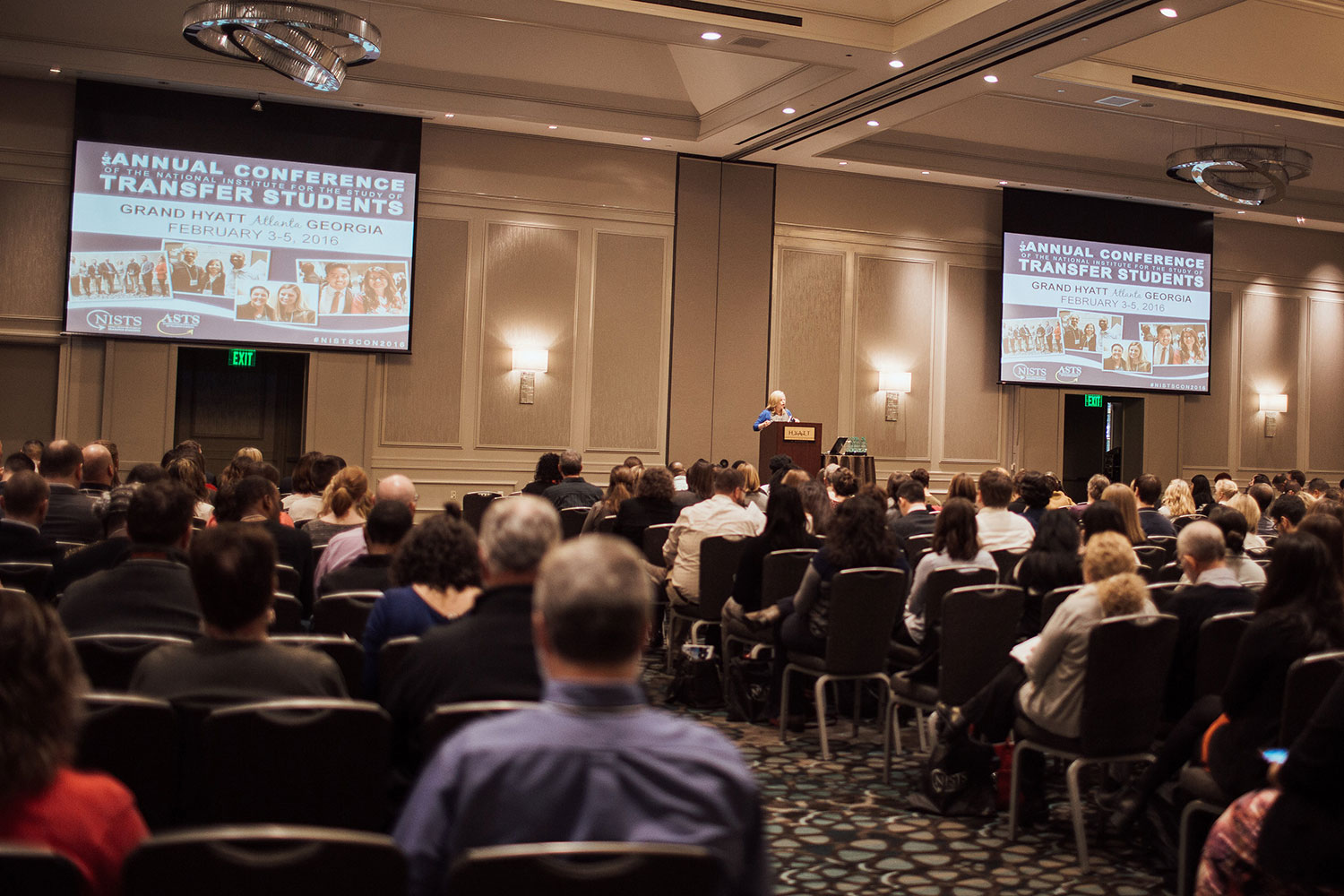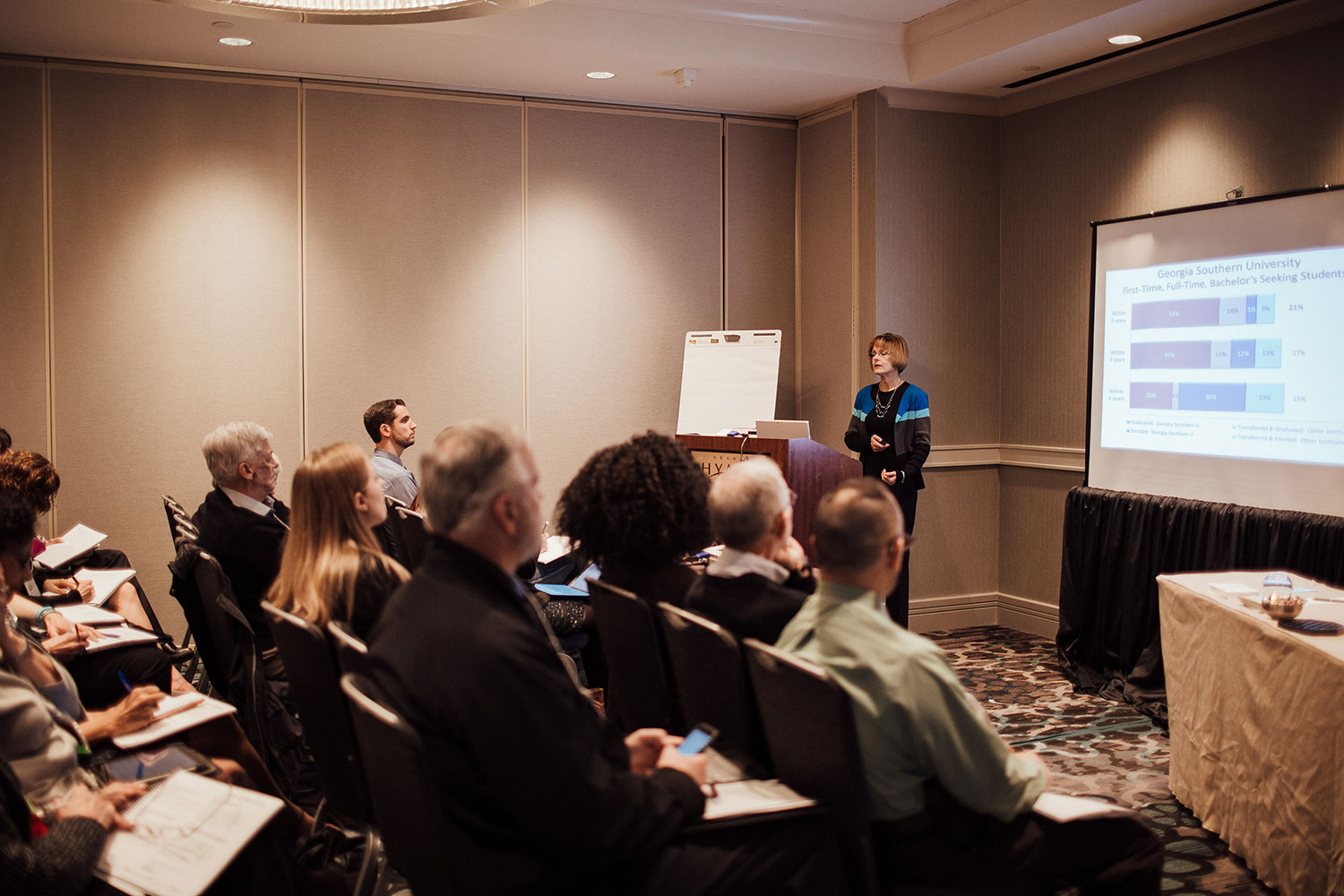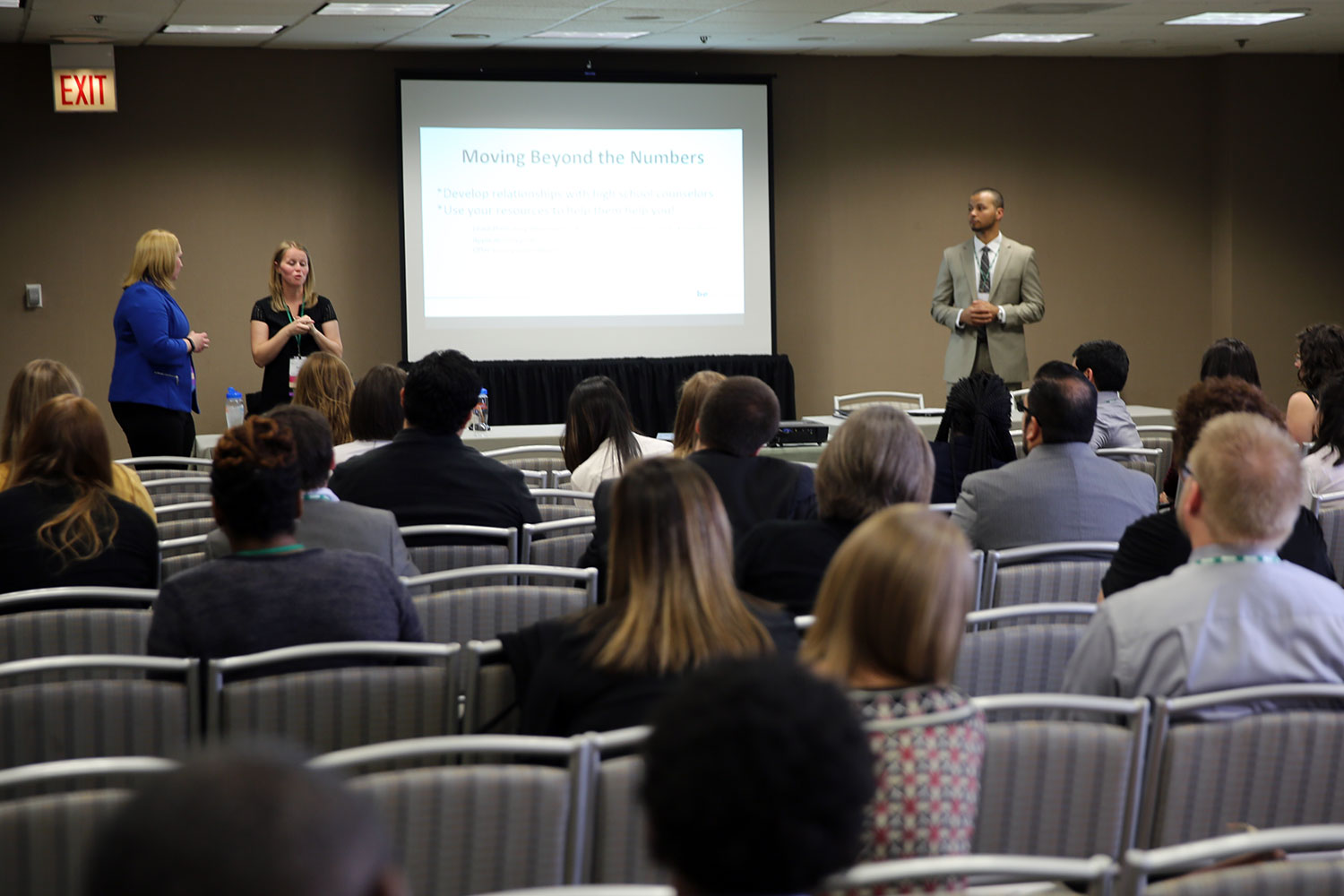My Experience Attending a Conference on Transfer Students
By DJ Menifee, Knox College
What better way to spend a few days in Atlanta, Georgia than to immerse myself in an environment dedicated to innovation of the transfer student experience? This time in the history of higher education is indeed a critical time for an often overlooked group: transfer students. A diverse group of professionals representing 2 and 4-year institutions, from academic advisors to admissions representatives, faculty members to registrars, converged in Atlanta, seeking to create solutions and support for transfer students. The inclusive group of over 500 professionals further confirms the importance of pathways for these students. During the National Institute for the Study of Transfer Students Conference, I learned more about cooperative partnerships between 2 and 4-year institutions, competitive scholarships for transfer students, opportunities for the recruitment of Phi Theta Kappa students, and the reverse transfer process. I also heard directly from students on their journey through the transfer process and how colleges and universities can better support them through both the application and enrollment process. From the interesting relationship between Kansas University and Johnson County Community College, to the significant role of tuition costs (46% base their choice on this), the transfer student process is vast in its opportunities and challenges. The aspects that personally resonated most were financial barriers, recruitment demographics and strategies, and the student perspectives shared during the event.
42% of community college students don’t file the FAFSA and that 61% of transfers believe their education should cost less than $20,000
Financial Barriers for Community College Transfers
While attending the session Dollars and Sense: Examining Financial Assistance and Transfer Student Success, I learned about the financial concerns transfer students have and why it may be more challenging for private colleges to attract them. Did you know that 42% of community college students don’t file the FAFSA and that 61% of transfers believe their education should cost less than $20,000? If their experiences so far in higher education have been significantly discounted up to that point, it stands to reason that they expect a continuous discount. This reality makes sense for the 46% of students that eliminate colleges solely on cost before applying, and the 39% that do so without research. It explains why 87% of college admission deans and directors feel as though they are losing out on applicants due to sticker price. Are certain institutions pricing themselves out of the transfer market? Transfer students are more price sensitive than traditional first-year students during the college search process. This makes it critical for institutions trying to attract transfer students to be mindful of the perceptions of cost, confirm that scholarship and financial aid information is accessible online, and provide information on the value of their education.
Scholarships and Financial Aid
Over 51% of institutions, including 2 and 4-year institutions, have a different funding procedure for transfer students. Most 4-year institutions’ transfer scholarships are significantly less than the scholarship opportunities for first-year students, and, on average, private institutions tend to offer more in scholarships for transfer students. Are 4-year institutions making it more challenging to attract and enroll transfer students? What would happen if they increased transfer scholarships to match annual awards for first-years? If we want students to earn bachelor’s degrees and the majority of students enrolled in higher education attend community colleges, 4-year public and private institutions have to find ways to break down financial barriers.
The average community college GPA of a Phi Theta Kappa students is a 3.81 and 91% of them go on to earn an associate degree or transfer to a 4-year institution.
Recruitment Demographics and Strategies
Phi Theta Kappa students are highly sought after within the transfer recruitment world. And why not? During the Phi Theta Kappa session, I learned that their average community college GPA is a 3.81 and 91% of them go on to earn an associate degree or transfer to a 4-year institution. These students are high achievers, leaders on and off campus, and critical thinkers looking for a challenge. However, I also learned that the average age of a Phi Theta Kappa student is 27 and that the majority of them are first generation students. This means that you might be recruiting strong adult-learners to a college campus that is more traditionally populated with students aged 18-23. The top majors for Phi Theta Kappa students are nursing, business, health professions, education, liberal arts, accounting, psychology, biological science, computer science, and criminal justice. This information is beneficial for 4-year transfer counselors as we try to personalize our messaging to attract the best fit transfer student to our campus community. It’s also helpful to have some sense of how family and ties to the community may play a role in their decision making process.
What resources does your office have to successfully recruit transfer students? One or two admission counselors? Maybe more? What percentage of your incoming class is made up of transfer students? During the Phi Theta Kappa session, I learned about institutions across the country utilizing their Phi Theta Kappa Alumni Council on campus to support their recruitment initiatives. These students volunteer to recruit at community colleges for daily visits and college fairs, and support the visit programs by being available to connect with prospective transfer students. There are opportunities to collaborate with impressive transfer students on your campus and utilize them to recruit the incoming class. Are you using Phi Theta Kappa advisors? You can send them institutional communications, as well as attend a Phi Theta Kappa meeting to promote your institution.
Transfer Student Perspectives
The transfer student panel was one of the most popular sessions of the conference. The panelists represented non-traditional students, those with average academic backgrounds as well as specific academic focus, and diverse personalities. Here is what they had to say in bullet points—many of these are ideas or concepts that you’re probably already implementing, but it’s always good to get verification from those who have gone through the transfer process.
- Communicate clear application requirements and deadlines.
- Be transparent about the transfer credit process. It is very helpful to have up-to-date transfer guides and articulation agreements.
- Present yourself (or someone in admission) as available. Though all the different communications coming digitally and through direct mail is good, have someone who will help them through the process if they need it.
- Clarify next steps following admission.
- Provide clear direction for orientation, class registration, and the particularities of your institutional process and how that may differ from their previous experiences.
As in many areas of our work, we cannot create a successful transfer experience without full participation. Our language requires clarity on the transfer credit process, confirmation of reverse transfer for those seeking credentials along the way, availability of an orientation program supporting the transfer experience, and resource accessibility during their time on campus. Transfer students need to feel as much a part of the community as the traditional first year student. While it may be easier for institutions that have a higher percentage of transfer students in their communities to prioritize this group, it is imperative for those that don’t to do so as well.
Transfer students need to feel as much a part of the community as the traditional first year student.
What steps will you take?
Following my attendance at the conference, I have returned with more of a critical eye on our transfer recruitment initiatives. Do we have specific communication for transfers? Are the communications we do have clear and transparent? What other ways can we successfully recruit transfer students? Though I’ve shared some of the questions I’ve reflected on over the last month, I also have questions for my 4-year peer institutions. How can you better support transfer students? How are you supporting them on campus? Are you providing similar opportunities for transfer and first year students, academically, financially, and socially? Are you being creative in how you handle your transfer search? Should legislation pass to make community college free, how will that impact your enrollment? How would free community college change your recruitment efforts?
While attending this conference, I found the collective advocacy represented most inspiring. Each individual attending sought to communicate that they were an advocate on campus and in their communities for transfer students. Now, more than ever, I understand the need to advocate for transfer students on my campus. Who is advocating for transfer students on your campus and in your community?
Photos courtesy of National Institute for the Study of Transfer Students and by Raluca Rodila Photography






